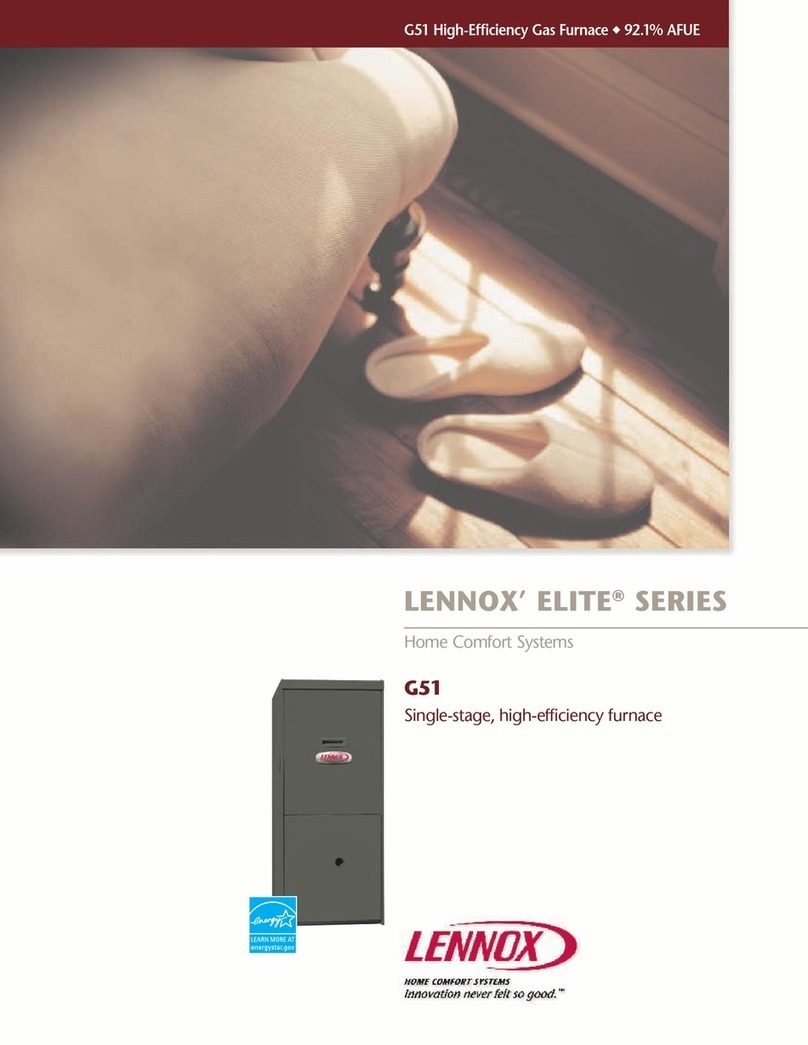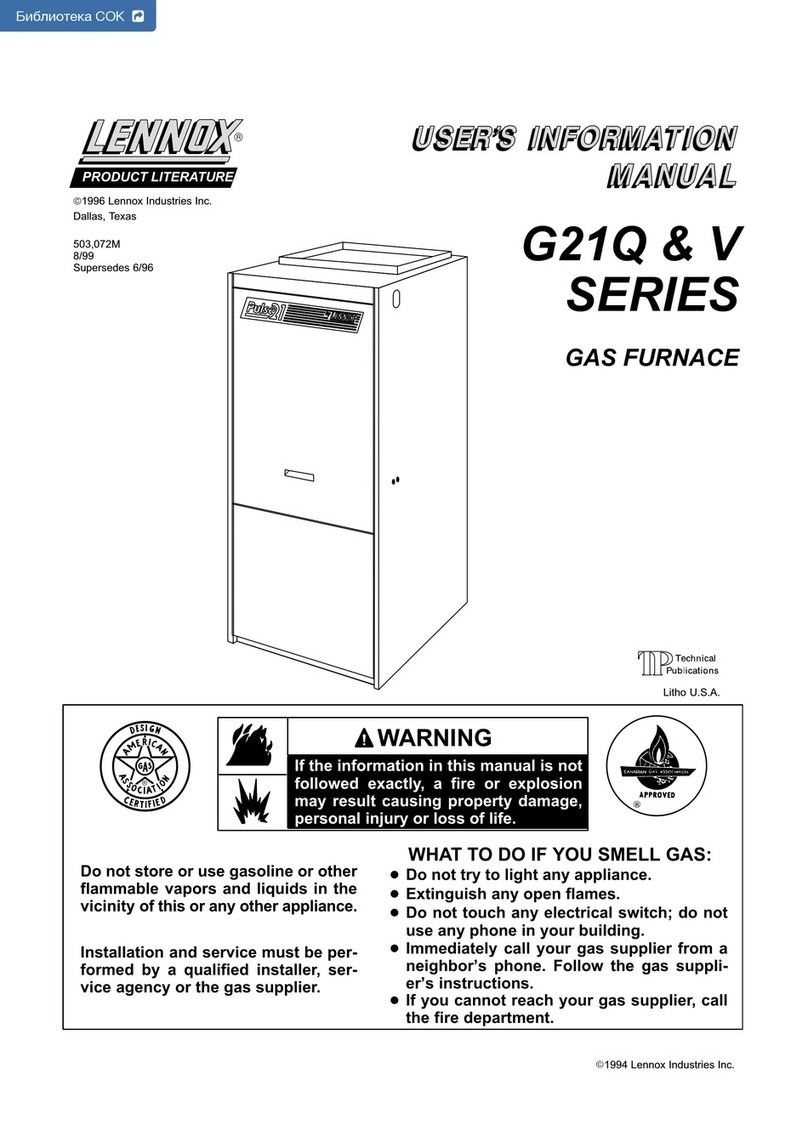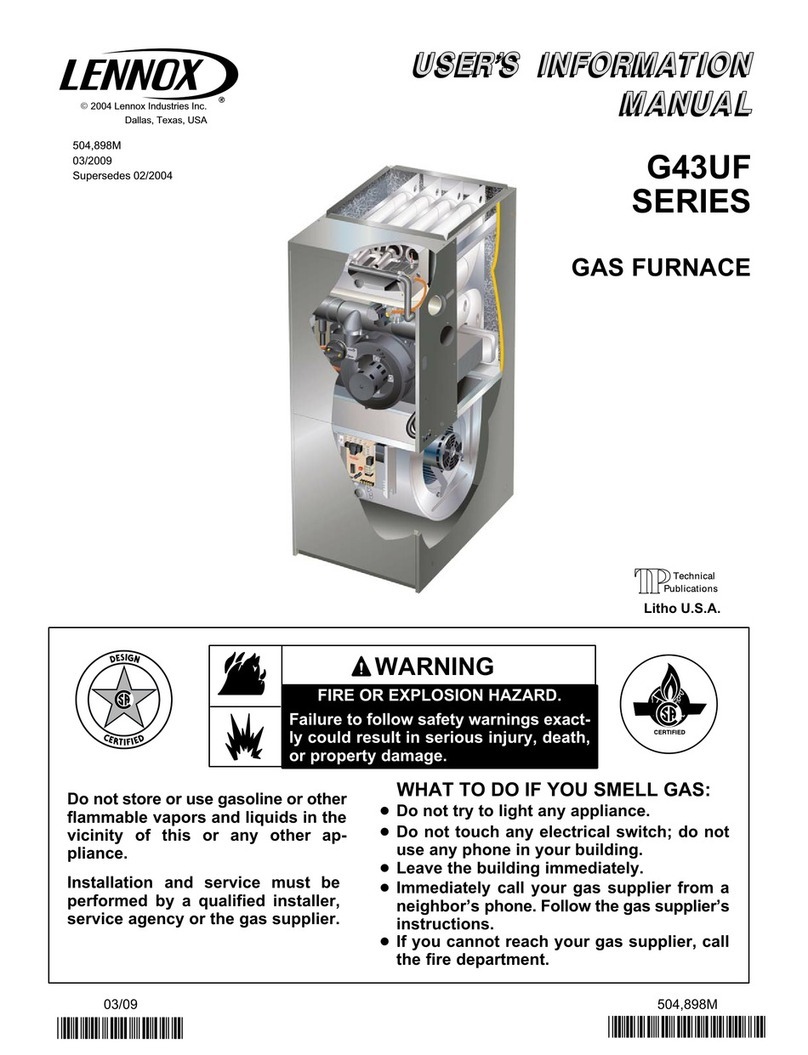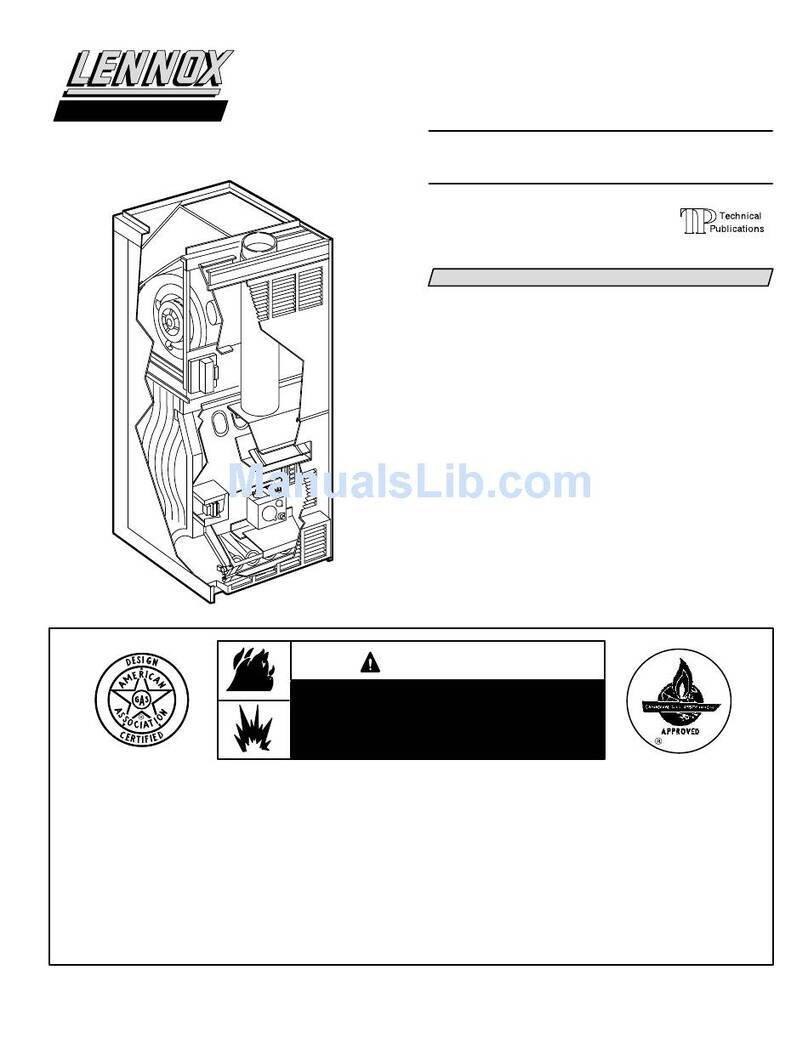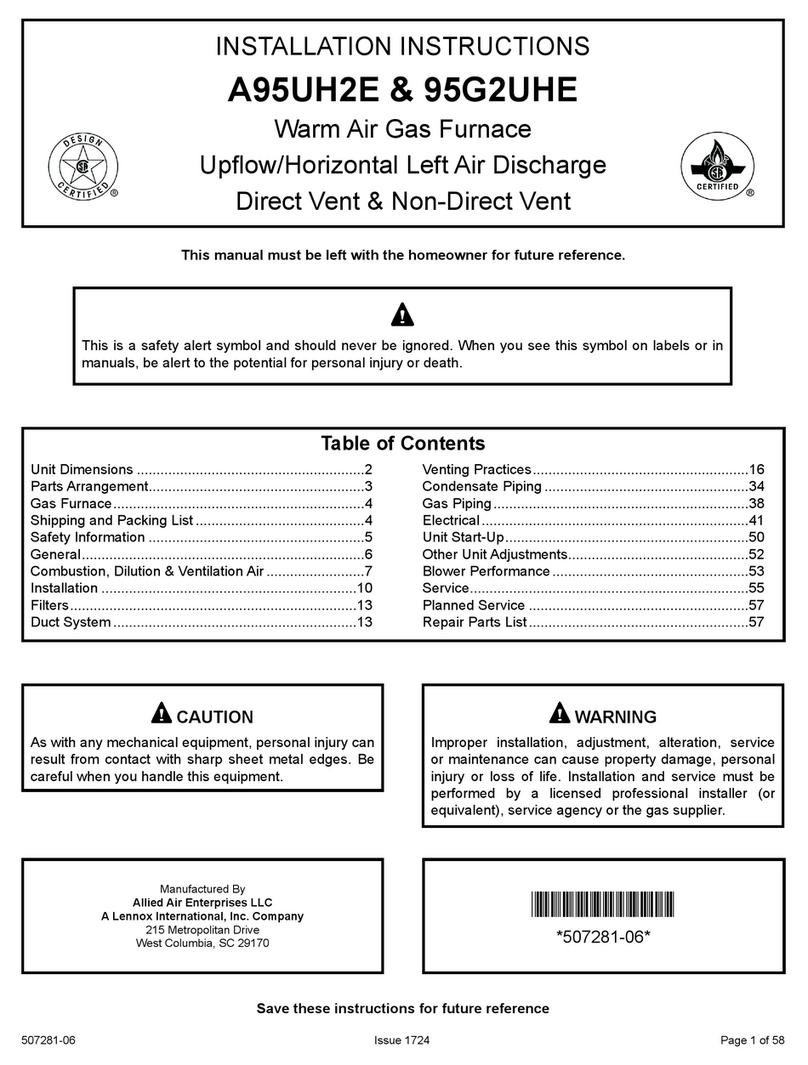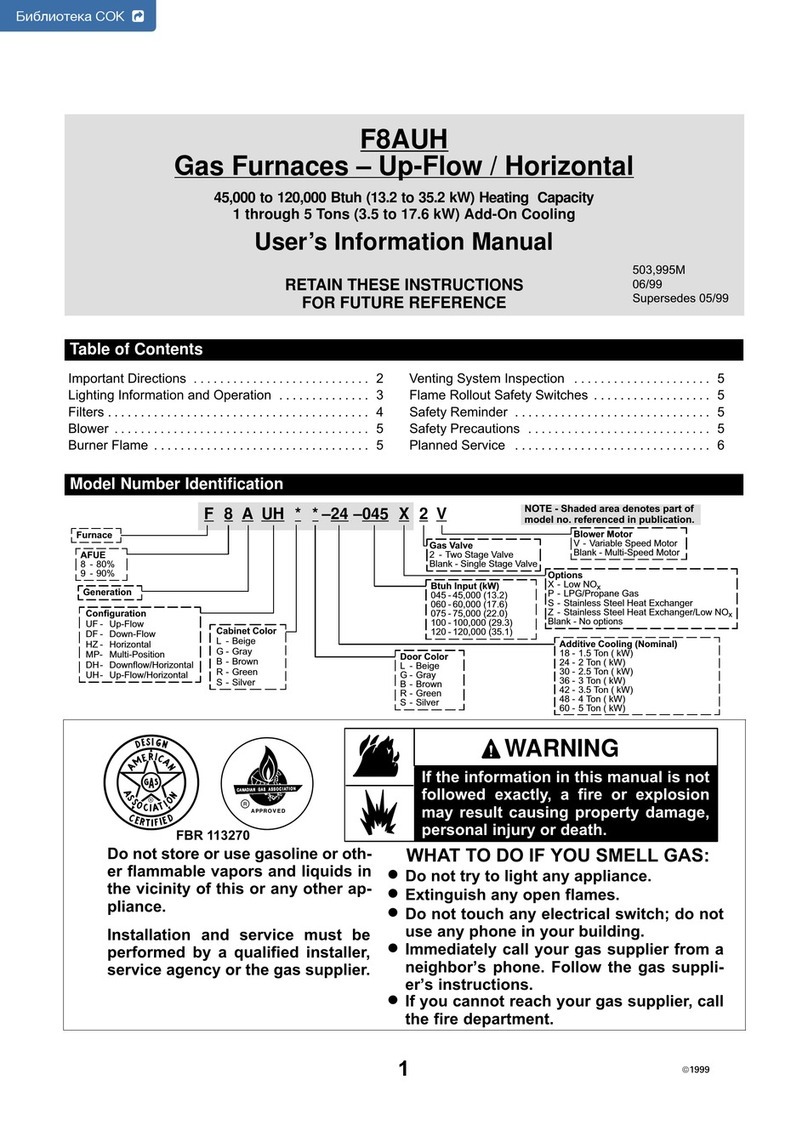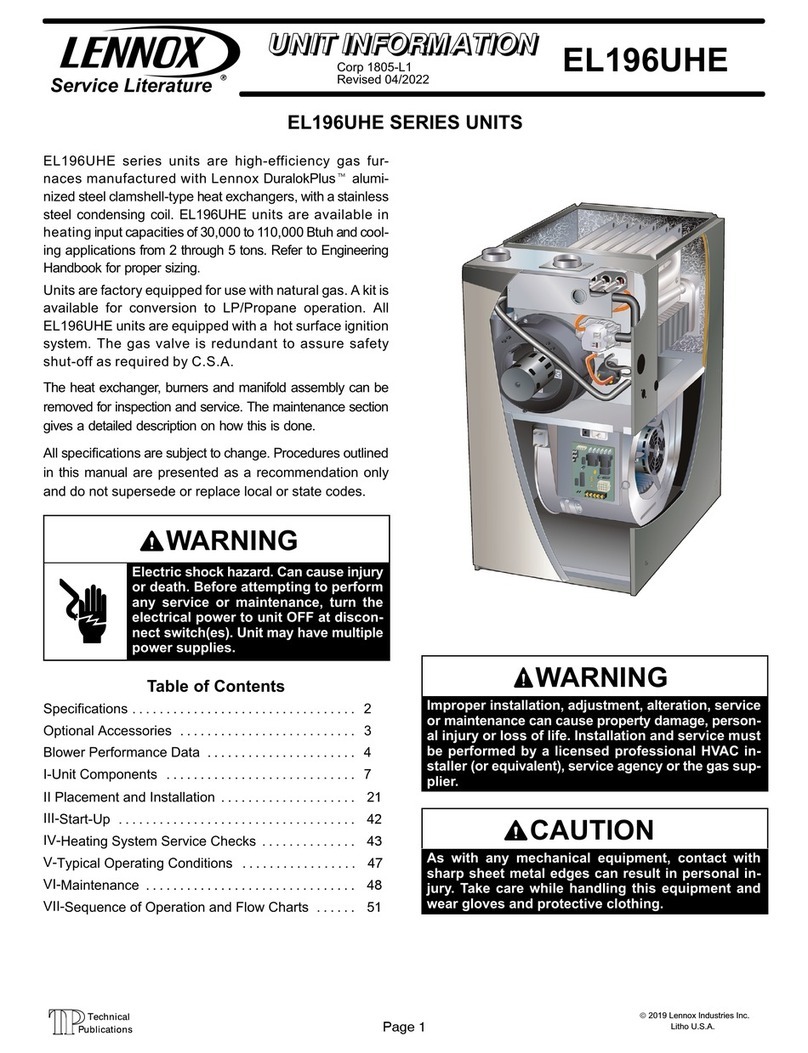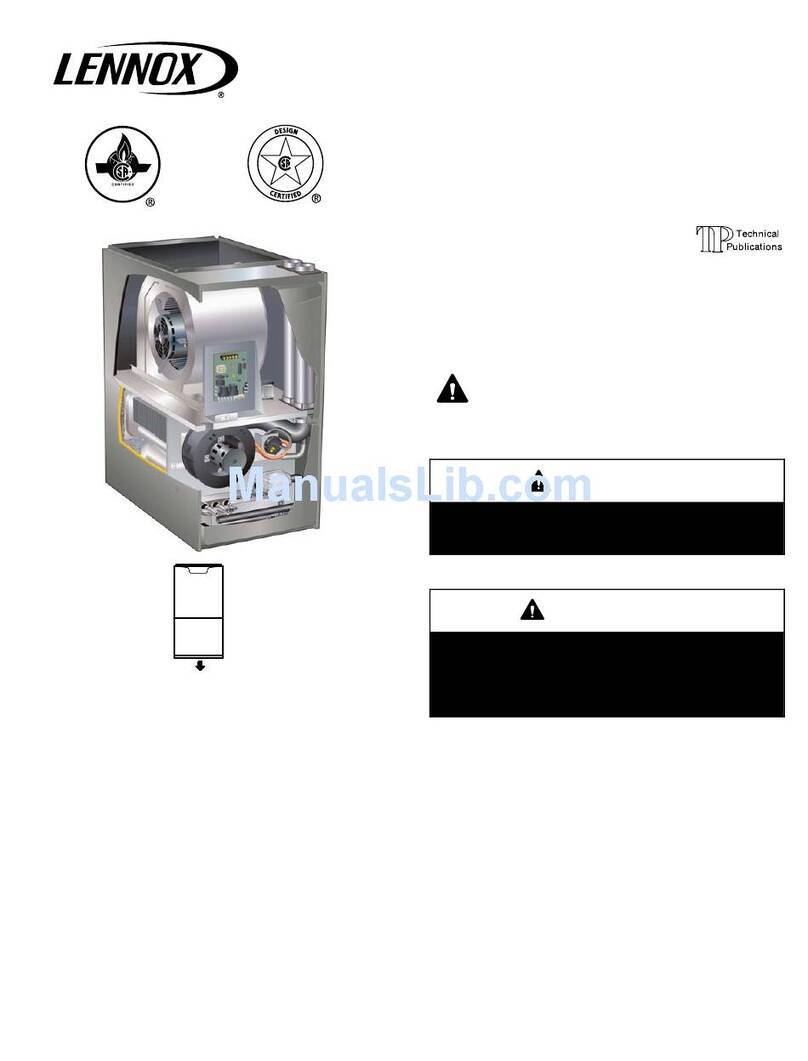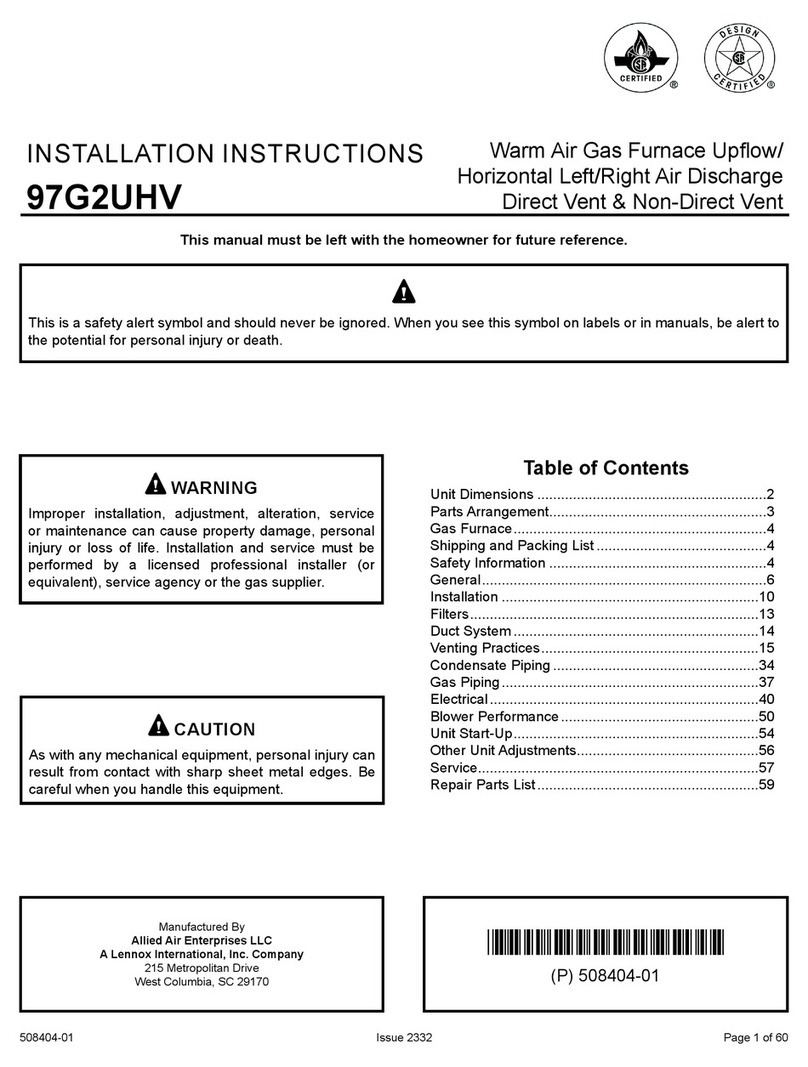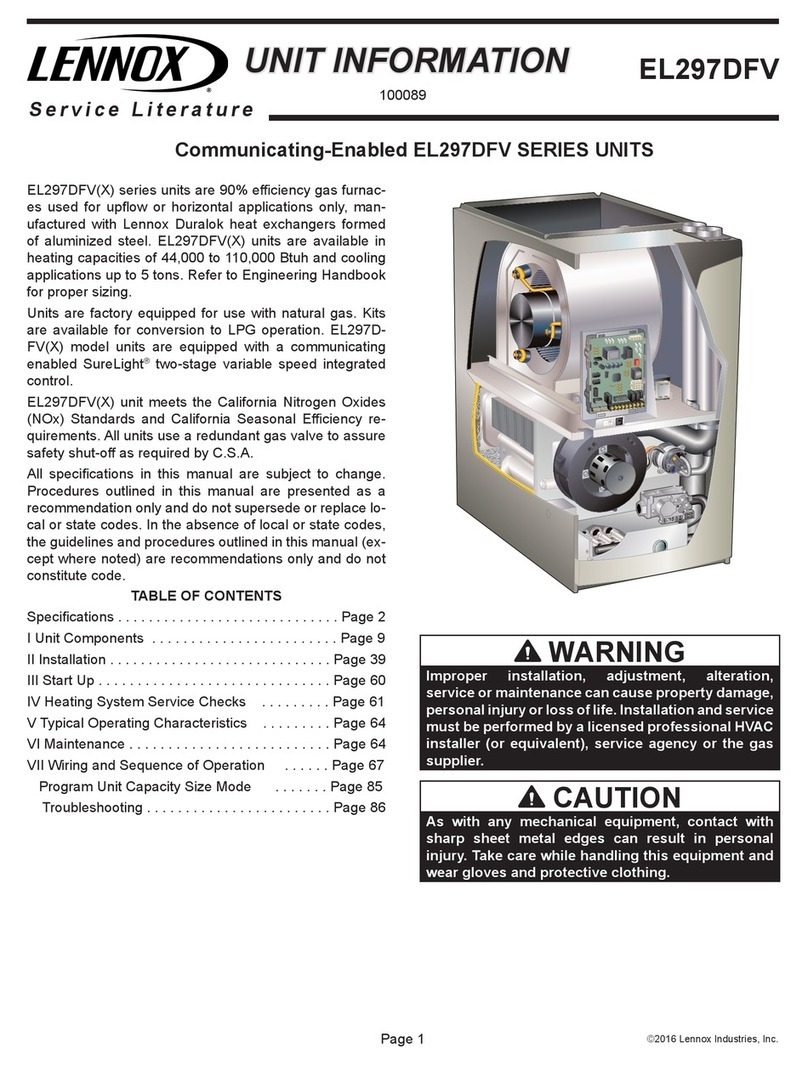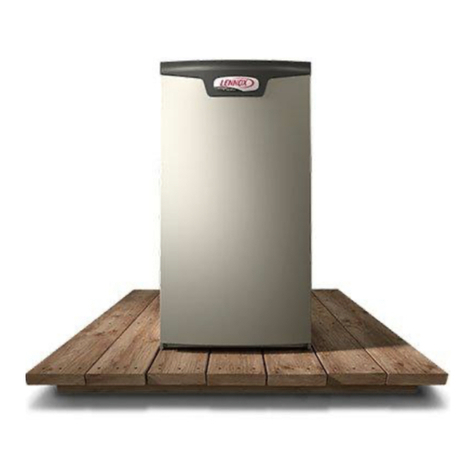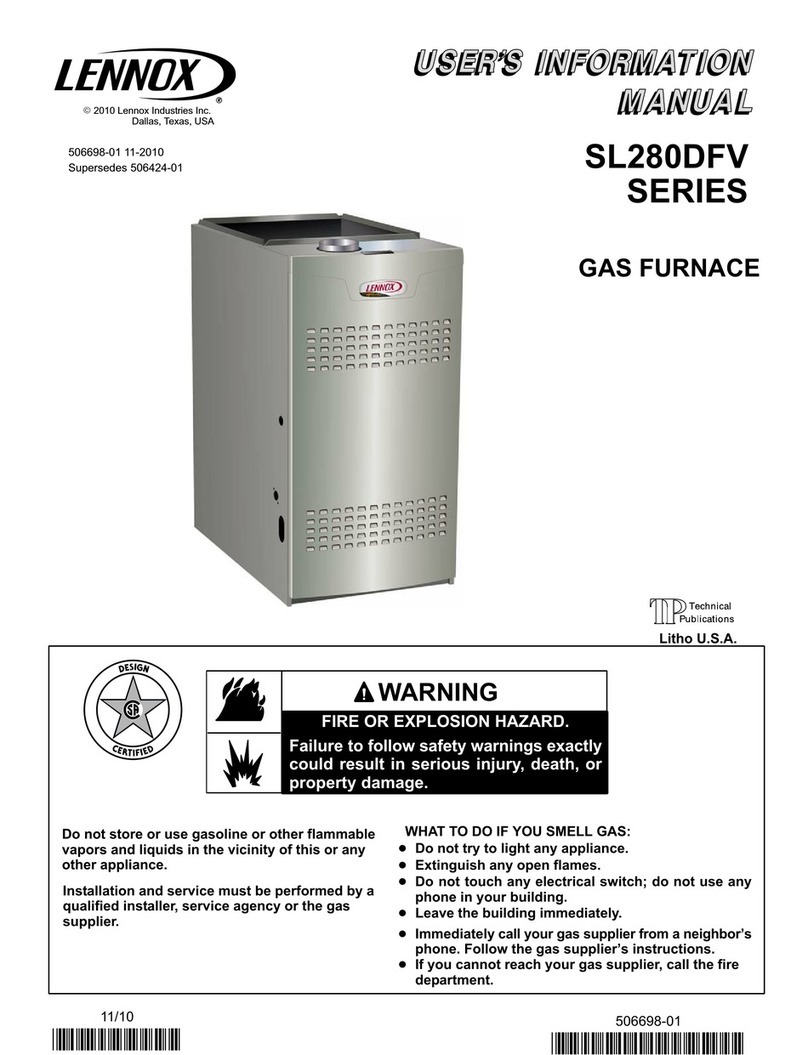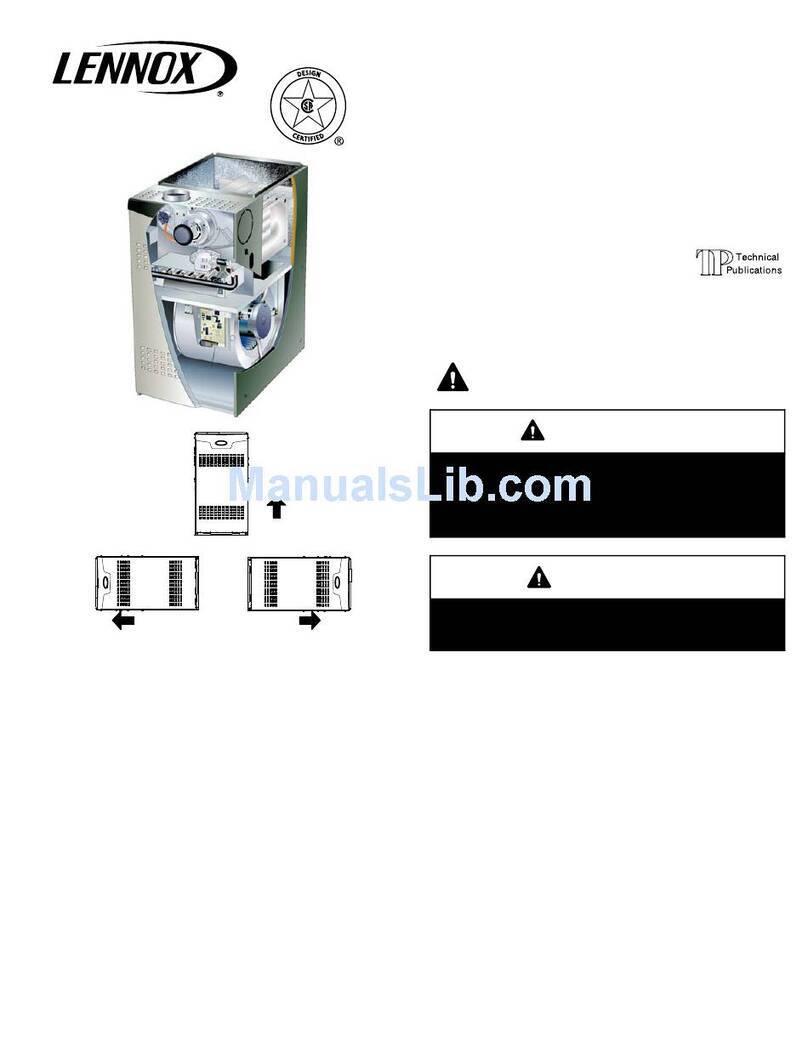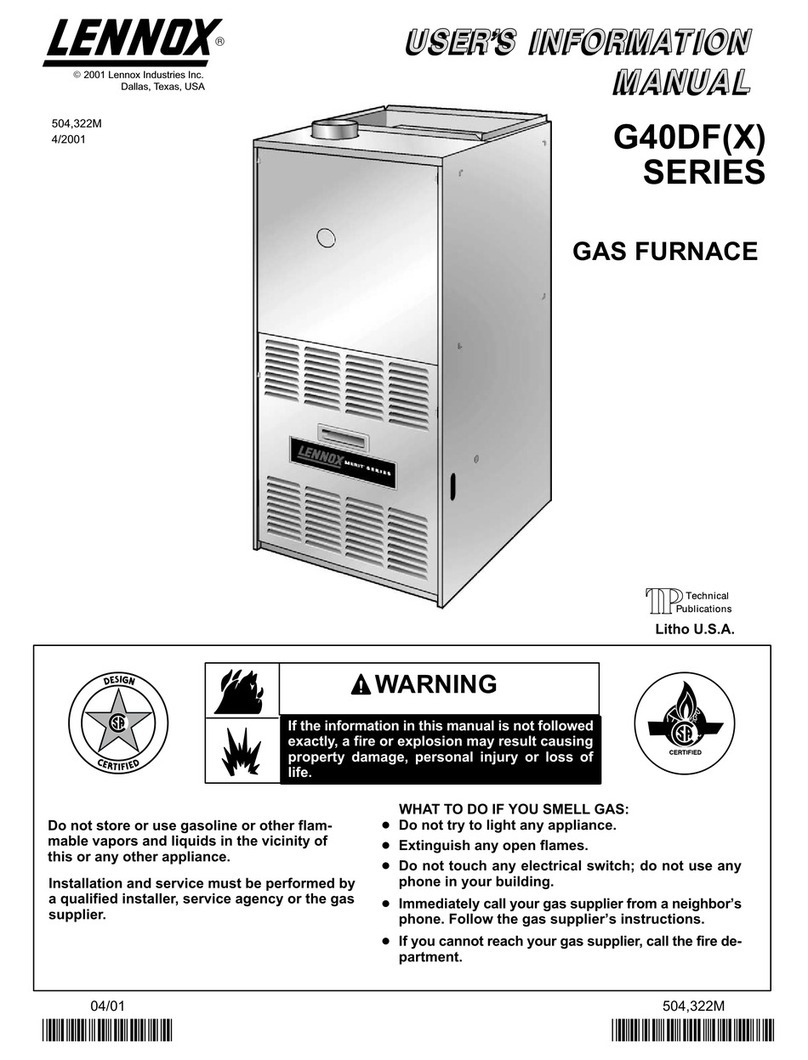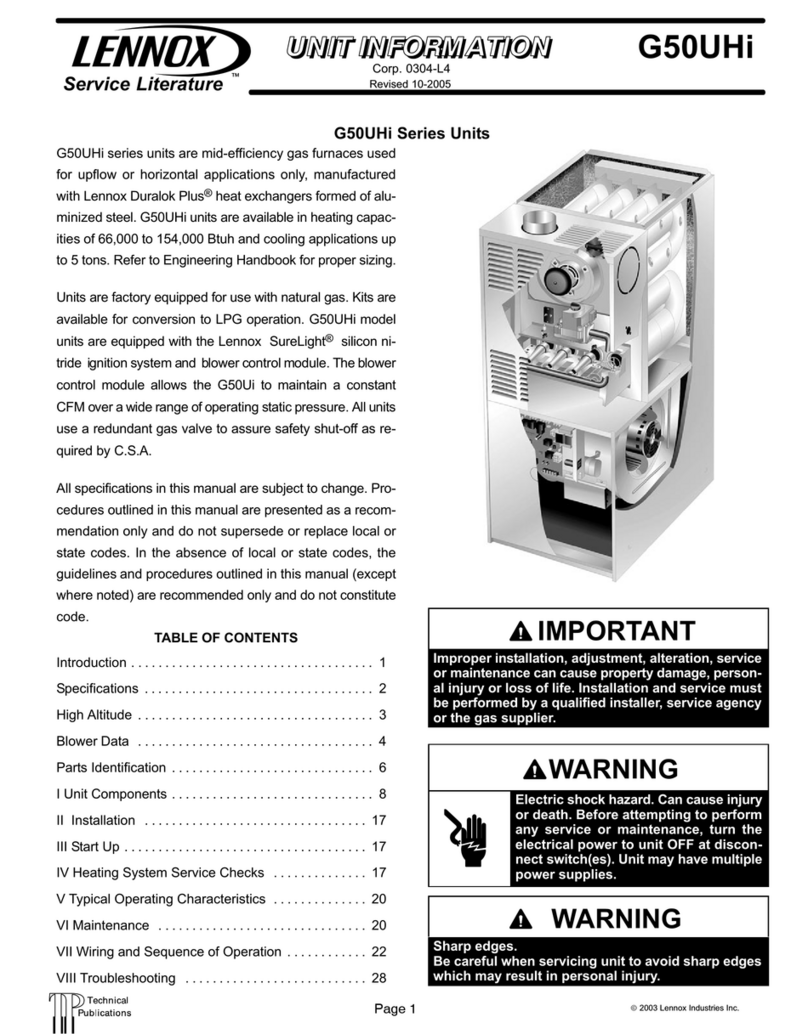
Page 4
American National Standards Institute, Inc.
11 West 42nd Street
New York, NY 10036
In Canada, installation must conform with current National
Standard of Canada CSA-B149 Natural Gas and Propane
Installation Codes, local plumbing or waste water codes
and other applicable local codes.In order to ensure proper
unit operation in non-direct vent applications, combustion
and ventilation air supply must be provided according to
the current National Fuel Gas Code or CSA-B149 stan-
dard.
Installation Locations
clearances to combustible material as listed on the unit
nameplate and in the table in FIGURE 12. Accessibility
protection clearances.
NOTE - For installation on combustible oors, the furnace
shall not be installed directly on carpeting, tile, or other
combustible material other than wood ooring.
For installation in a residential garage, the furnace must
be installed so that the burner(s) and the ignition source
are located no less than 18 inches (457 mm) above the
physical damage by vehicles. When a furnace is installed
in a public garage, hangar, or other building that has a
-
cording to recommended good practice requirements and
current National Fuel Gas Code or CSA B149 standards.
NOTE - Furnace must be adjusted to obtain a temperature
rise within the range specied on the unit nameplate. Fail-
ure to do so may cause erratic limit operation and prema-
ture heat exchanger failure.
This EL195UHNE furnace must be installed so that its
electrical components are protected from water.
Installed in Combination with a Cooling Coil
NOTE - If a non-Lennox coil is used, consult the coil’s lit-
erature for the recommended distance from the top of the
furnace cabinet/heat exchanger.
When this furnace is used with cooling coils (FIGURE 3),
it shall be installed in parallel with, or on the upstream
side of, cooling coils to avoid condensation in the heating
prevent chilled air from entering the furnace. If the damp-
er is manually operated, it must be equipped to prevent
operation of either the heating or the cooling unit, unless it
is in the full HEAT or COOL setting.
When installed, this furnace must be electrically grounded
according to local codes. In addition, in the United States,
installation must conform with the current National Elec-
tric Code, ANSI/NFPA No. 70. The National Electric Code
(ANSI/NFPA No. 70) is available from the following ad-
dress:
National Fire Protection Association
1 Battery March Park
Quincy, MA 02269
In Canada, all electrical wiring and grounding for the unit
must be installed according to the current regulations of
the Canadian Electrical Code Part I (CSA Standard C22.1)
and/or local codes.
Gas Unit
Heating Unit Installed Upstream of Cooling Coil
Gas Unit
Dampers
(open during heating operation only)
Dampers
(open during cooling operation only)
Heating Unit Installed Parallel to Air Handler Unit
Air Handler Unit
AIR FLOWAIR FLOW
AIR FLOW AIR FLOW
FIGURE 3
NOTE - This furnace is designed for a minimum continu-
ous return air temperature of 60°F (16°C) or an intermittent
operation down to 55°F (13°C) dry bulb for cases where a
night setback thermostat is used. Return air temperature
must not exceed 85°F (29°C) dry bulb.
The EL195UHNE furnace may be installed in alcoves,
closets, attics, basements, garages, crawl spaces and
-
mobile homes, recreational vehicles, or outdoors.
Use of Furnace as Construction Heater
Construction heat is not allowed with this furnace.
General
These instructions are intended as a general guide and do
not supersede local codes in any way. Consult authorities
having jurisdiction before installation.
In addition to the requirements outlined previously, the
following general recommendations must be considered
when installing a EL195UHNE furnace:
• Place the furnace as close to the center of the air
distribution system as possible. The furnace should
also be located close to the vent termination point.
• When the furnace is installed in non-direct vent ap-
plications, do not install the furnace where drafts
might blow directly into it. This could cause improp-
er combustion and unsafe operation.
• When the furnace is installed in non-direct vent ap-
plications, do not block the furnace combustion air
opening with clothing, boxes, doors, etc. Air is need-
ed for proper combustion and safe unit operation.
